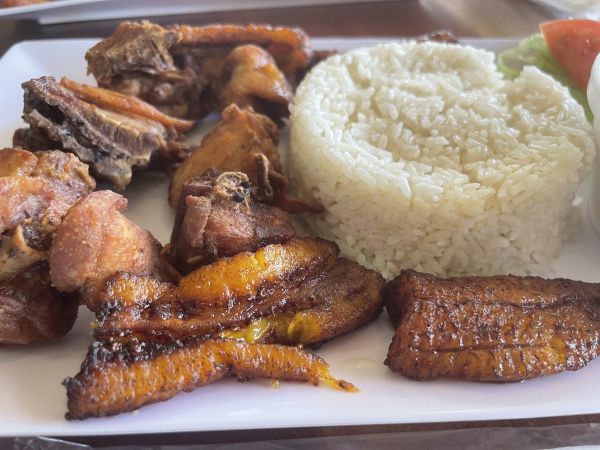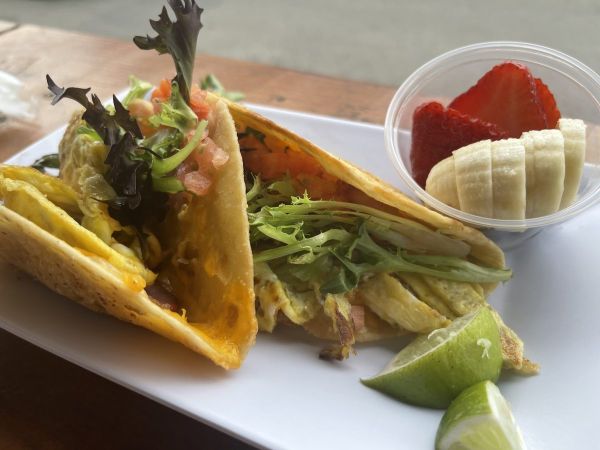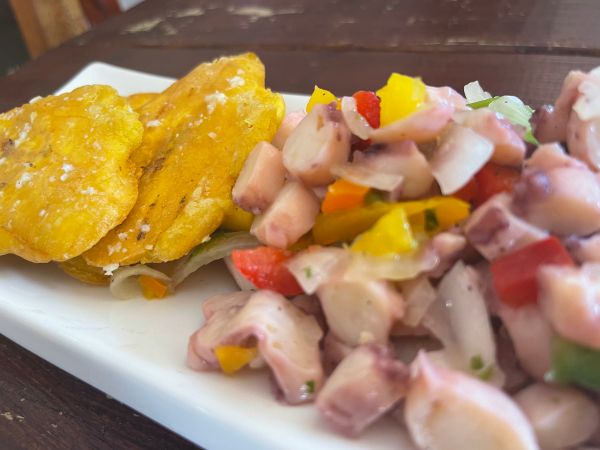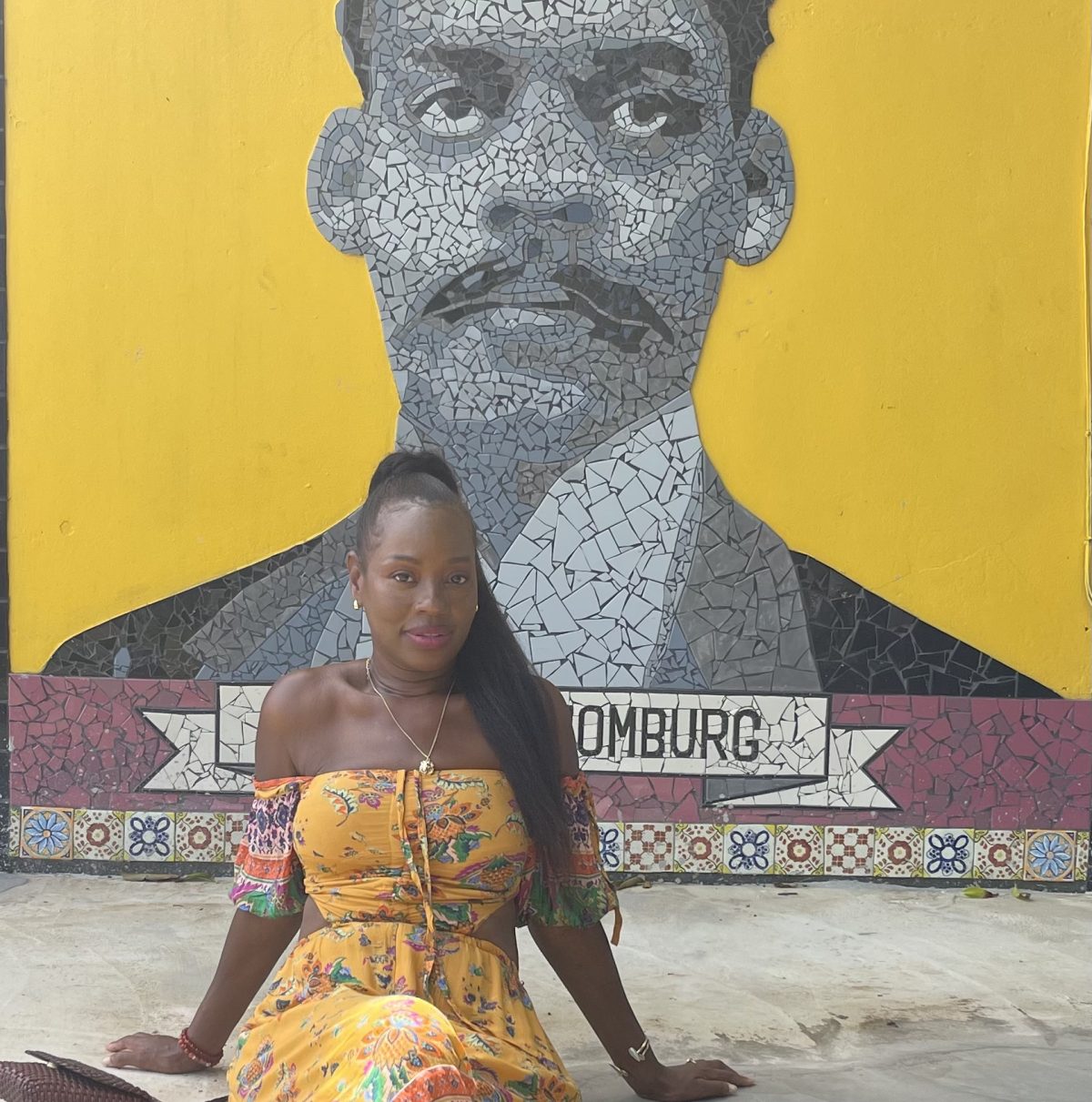Just weeks ago, MADAMENOIRE took to the San Juan, Santurce, and more importantly, Loiza streets to absorb Puerto Rico’s rich culture and its native people. These same gorgeous streets have been sorely impacted by Hurricane Fiona. Residents have been without power, and lives have been lost. Our hearts break at the devastation the island is currently experiencing, particularly as Puerto Ricans have yet to recover from the destruction brought on by Maria in 2017. Celso, the Puerto Rican muralist, who was integral to MN’s initiative, expressed that although he is OK there is extreme sadness “to see so much suffering, again, so soon.” He is adamant that PR will “rebuild again” because “that’s what we do.”
Puerto Rico is ours. We should all be compelled to turn our support and the power to give directly to the island and place tangible resources into the hands of the people. We hope that you will find this story as inspiring as we did and be moved to support the recovery efforts of this beautiful land and its resilient people.
Please contribute to Ayuda Legal Pr – A legal organization that is providing resources for residents.
Sponsored by American Airlines
Puerto Rico has a thriving Afro-cultural community that is rarely seen in television ads, textbooks, tourist zones or running across social media timelines. This piqued my interest as someone who grew up in a mixed household which was one part African American–and one part Puerto Rican, albeit living in New York City.
My mother, Debra, a Black woman, married my stepfather Louis, a Puerto Rican. My brother, Little Louis, is the fruit of that union and is very much Afro-Latino, yet is clueless about his Puerto Rican roots. What if that wasn’t the case? What if we had been brought up on the island? What would Afro-Latino life look like for my family in PR?
My mindset is “Let There Be No Limits.” Yup, I’m about that life. So, at the first opportunity to satisfy that curiosity and my wanderlust, I hopped on an American Airlines flight that did not compromise my comfort, and you know what makes a four-hour plane ride better know? Plenty of elbow and legroom—Wi-Fi access, snacks and spirits. I give the Main Cabin Extra seating the chef’s kiss.
Puerto Rico is brimming with mestizo identity, but I’m interested in the side of Puerto Rico, which looked like my household as a child. I am interested in the Blackest iteration of Puerto Rico. Food is usually a great place to start.
I pull up to an Afro-Puerto Rican restaurant in Loiza, the municipality that cradles most things Afro-Carib. The mural on the wall is itself a display of identity. A Black body split between being clean cut and reserved and shirtless, revealing chiseled chest and abs, and surrounded by women in traditional Bomba dresses. The color palette is a mix of hues that represent Blackness, specifically Ethiopia: rojos, amarillos, verdes. I get a sense that I am at the right place. I smell this in the air: mofongo, alcapurrias, tostones and other native food. The plantain, and all the dishes that derive from it, is a tell-tell sign of Loiza’s Africanness.

Source: Harris

Source: Harris

Harris
An authentic Bomba performance that includes dancers, drummers and vocalists, will transport any visitor into an Afrocentric trance. It’s an honorific tradition that pays homage to PR’s African and indigenous heritage–and it is infectious.
Multiple histories are expressed through art, and Puerto Rican art makes it plain. The architecture up and through San Juan conjures the island’s colonial past which is tied to Afro-Borinquen enslavement. A trip down los calles de Santurce speaks to the living histories through beautifully crafted and painted murals. In Loiza, Afro Casa is the epicenter of Afro-Puerto Rican art. A massive mosaic mural of one of my literary heroes, Arturo Schomberg, is hard to miss. Its style is reminiscent of murals that travelers will find in Santurce. I’m an art girl for sure, and even if art isn’t your thing, this is a visit you mustn’t forego.

Source: Harris
The art immersion doesn’t rest there. Batey De Los Hermanos Ayala is where local Loíza sculptor Raul Ayala Carrasquillo sets up shop. It is where Raul and his wife welcome visitors into his studio to share robust storytelling of mask-making, how it is handed down from his father, Castor Ayala, and how it is directly tied to Loíza’s African ancestry. Raul even demonstrates the process of sculpting colorful masks from fresh coconuts.
Almost no one can escape the aroma of Loiza’s street food. Along the main strip, tourists will get hot, quick and savory food and a freshly cut coconut with cool coconut water to wash it all down.
I’ve come to know this: The food, the art, the people of Loiza and the Afro-history of Puerto Rico are national treasures.
As I sat in American’s Admirals Club lounge, sipping tea, munching on complimentary brownies and getting work done at its business center while I wait on my flight home, I wondered again–what it might have looked like if my brother and I were raised in PR. How might our lives and language be different? Would I be able to perform a beautiful Bomba? Would he? Would either of us be able to roast a perfect pernil for Nochebuena or serve the best pulpo? I’ll never know. But what I do know is that PR is accessible–it’s Afro-culture too. It’s never too late to learn, and I’ll be back.
RELATED CONTENT: Wellness Weekend: The Laid Back Island Vibe Of Puerto Rico Refreshed My Spirit








